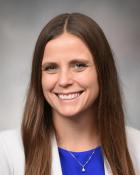Ebstein anomaly, also known as Ebstein’s anomaly, is a rare congenital heart defect that affects the development and function of the tricuspid valve. Like other congenital heart diseases, Ebstein anomaly is a heart problem present from birth.
In a typically developing heart, the tricuspid valve has three flaps, or leaflets. The valve opens and closes to allow blood flow from the right atrium, the upper chamber of the heart, to the right ventricle, the lower chamber. When the leaflets close, they prevent blood from backing up into the right atrium.
Ebstein anomaly happens when the tricuspid valve develops in a lower position than usual, leading to larger leaflets. Due to the position of the heart valve and the leaflets’ size, the leaflets are less effective in controlling blood flow.
Having Ebstein anomaly increases the risk of additional congenital heart defects, especially atrial septal defect, a hole between the upper chambers of the heart, and Wolff-Parkinson-White syndrome, a condition that affects electrical signals in the heart.
Symptoms of Ebstein anomaly vary in intensity from mild to debilitating based on the severity of the heart defect. Some infants with the condition experience life-threatening symptoms soon after birth. Others with Ebstein anomaly may never have symptoms or be symptom-free well into adulthood.
Adults with Ebstein anomaly may experience:
- Abnormal heart rhythms
- Chest discomfort
- Cough
- Cyanosis (bluish skin)
- Dizziness
- Fatigue
- Fast breathing
- Fluid retention, leading to swelling in the abdomen, ankles, feet or legs
- Rapid heartbeat, also called tachycardia
- Reduced stamina
- Shortness of breath with exertion
The prognosis for patients with Ebstein anomaly is related to the severity of symptoms and how old the patient is when symptoms start. Typically, the earlier the diagnosis or the more severe the symptoms, the poorer the prognosis.
In patients who do not receive surgery to treat Ebstein anomaly, nearly nine in 10 survive one year past diagnosis, and about 4 in 10 survive at least 20 years after diagnosis. For patients who have had surgical repair, life expectancy is linked to the severity of symptoms before surgery.
Prognosis may also be affected by complications of Ebstein anomaly, including:
- Blood clots
- Brain abscess
- Congestive heart failure
- Swelling of the heart or liver
The cause of Ebstein anomaly is unknown. Specific gene mutations may play a role. Use of certain medications, such as benzodiazepines or lithium, during pregnancy may also increase the risk.
Children with congenital heart disease become adults with congenital heart disease (CHD). Ninety percent of children born with CHD have a normal life expectancy due to improved surgical interventions and better medical management. At all ages, close monitoring and expert care for CHD patients are essential. Despite this, studies indicate that 2 out of 3 young adults with CHD don’t transition from pediatric to adult CHD care. Not getting continued cardiac care can lead to a variety of health problems and poor outcomes.
To guide teens and their families through the transition, UK Gill Heart & Vascular Institute team members talk about the transition early and often. Starting at age 15, teens with CHD begin transition education. One Wednesday every month, a special transition clinic staffed by adult congenital heart disease providers, is held to meet with teens and their families to discuss important topics, including:
- Abilities and limitations experienced as an adult with CHD
- Lifelong need for proper CHD monitoring and treatment
- What adult CHD care may involve over the years
Additionally, once you transition to adult care with the Adult Congenital Heart Program at UK Gill Heart & Vascular Institute, we work hard to enable you to keep your appointments and testing on track. We also work hard to empower you with knowledge and assist you in being your best advocate to live your best life. If you miss an appointment, we will call to reschedule.
During your first visit to the UK Gill Heart & Vascular Institute’s Adult Congenital Heart Program, you’ll meet our clinic nurse, social worker and other members of your care team. You’ll also undergo imaging exams, which may include an echocardiogram or a cardiac MRI.
Once imaging is complete, you will meet with an adult congenital cardiologist and other team members for up to one hour. You’ll discuss the results of your echocardiogram and your health history and symptoms. You will also get in-depth education about your diagnosis, how it may affect you moving forward and possible treatment options. The meeting is also a great opportunity to ask any questions about living with CHD.
When coming to your appointment:
- Bring a list of any medications or supplements you take and surgeries you’ve undergone.
- Dress comfortably.
- Have your insurance information on hand. UK HealthCare accepts most insurers, and financial assistance is available.
- You may want a family member or friend with you to take notes or help ask questions.
Where we are located
The UK Gill Heart & Vascular Institute is located at 800 Rose St. in Pavilion G, on the first floor of UK Albert B. Chandler Hospital. We will mail you a map and directions when your appointment is scheduled.
Patient drop-off
Patients can be dropped off in front of the main entrance to Albert B. Chandler Hospital at 1000 S. Limestone. If you are dropped off at the main entrance, you’ll enter the revolving doors on the ground floor of the hospital. Take the main stairs just to the left (or elevator across the atrium) to the first floor of Pavilion A.
After climbing the stairs or taking the elevator, turn left. You’ll pass the Kentucky Wall and Kentucky Children’s Hospital on your right. Continue to the end of the hall until it comes to a T shape. Turn left and the Gill clinic entrance is across from an open area housing the organ donor wall.
Parking
It is easiest to park in the UK HealthCare Parking Garage, across from the hospital at 110 Transcript Ave.
There are two paths from this garage to the Gill clinic:
- You may take the free shuttle from Level A of the parking garage. You’ll exit the shuttle at the Pavilion A/ Pavilion G stop in front of the main entrance to the hospital. After climbing the stairs or taking the elevator, turn left. You’ll pass the Kentucky Wall and Kentucky Children’s Hospital on your right. Continue to the end of the hall until it comes to a T shape. Turn left and the Gill clinic entrance is across from an open area housing the organ donor wall.
- From Level C of the parking garage you may walk or take a golf cart across the pedway to the first floor of Pavilion A. Turn left past the help desk and walk away from the dining hall. You’ll pass the Kentucky Wall and Kentucky Children’s Hospital on your right. Continue to the end of the hall until it comes to a T shape. Turn left and the Gill clinic entrance is across from an open area housing the organ donor wall.
If you need help finding your way, information desks are located inside the main entrances to Pavilion A, both on the ground floor and at the end of the pedway on the first floor. You may also call the information desk at 859-323-5816.
Clinical trials provide access to novel treatments for those in the adult CHD program at UK Gill Heart & Vascular Institute. Through our Cardiology Clinical Research Center, patients benefit from advances in valve replacement and other therapies before they become standard treatment. Your care team will notify you if you qualify for an ongoing clinical trial.








